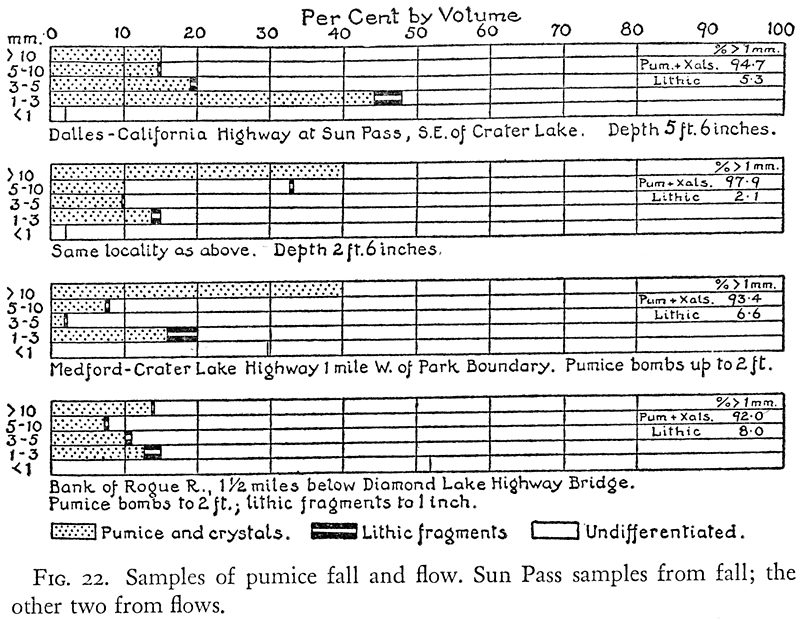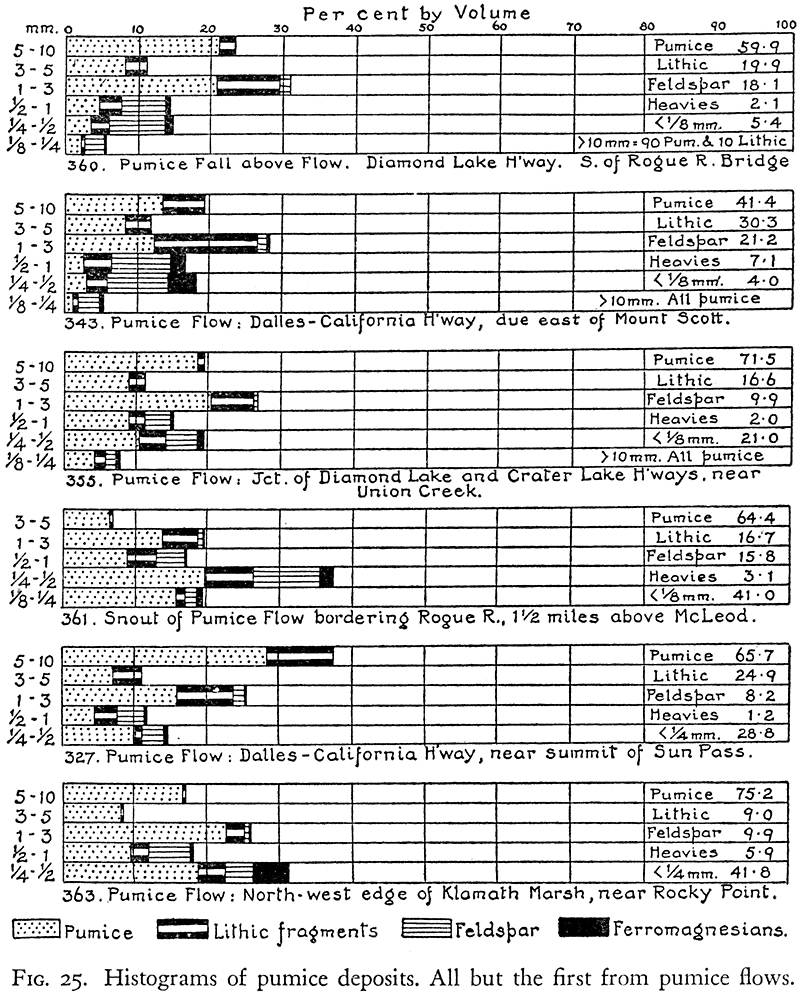The Geology of Crater Lake National Park, OregonWith a reconnaissance of the Cascade Range southward to Mount Shasta by Howell Williams
The Climax: Culminating Explosions of Pumice and Scoria
The Glowing Avalanches: Pumice and Scoria Flows
Double Character of the Deposits
Probably more than seven-eighths of the flows consists of pale-gray and buff dacite pumice similar mineralogically to the material of the preceding pumice fall. The pumice itself is highly vesicular and often fibrous, and lightly charged with crystals of plagioclase, pyroxene, and hornblende. In the fraction less than I mm. in diameter, the content of crystals ranges from a quarter to two-thirds and averages about a third, feldspar predominating over the heavier minerals. The ratios of the minerals and their amounts in typical samples are shown in figures 22, 25, and 26. After the magma chamber had been exhausted of its dacitic part, the pumice flows were immediately followed by avalanches of smoke-gray basic scoria. These dark scoria flows are well seen in the canyons of Annie, Sun, Sand, and Castle creeks, where they make a striking contrast with the underlying pumice (plate 16). The transition between the two deposits takes place within a few feet. There are no intermediate andesitic ejecta. Elsewhere it has been shown that the building of the main andesite cones of Mounts Mazama and Shasta was followed by extrusion of thick masses of dacite and formation of basaltic cinder cones. The culminating pumice and scoria eruptions of Mazama likewise involved the expulsion of the two extreme magma types in rapid succession.



